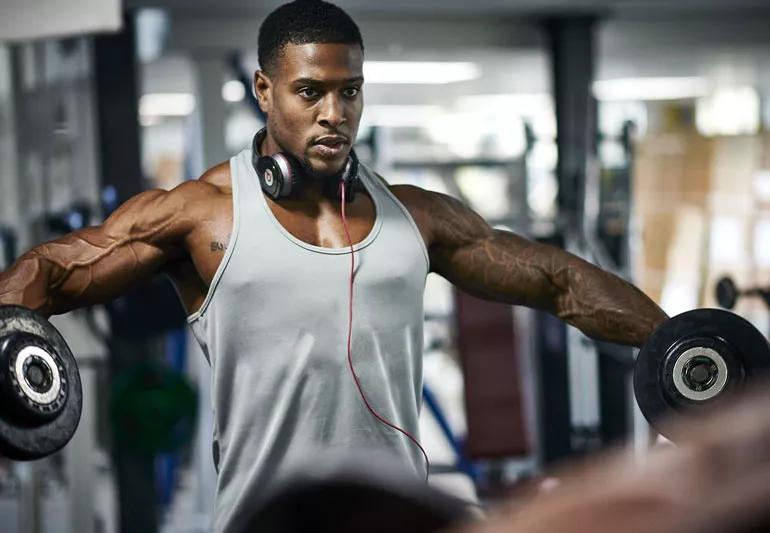The ‘afterburn effect’ is the energy your body uses to refuel and recover after a workout

Do you want a bigger bang for your exercise buck? Excess post-exercise oxygen consumption (EPOC) is one way to get it.
Advertisement
Cleveland Clinic is a non-profit academic medical center. Advertising on our site helps support our mission. We do not endorse non-Cleveland Clinic products or services. Policy
EPOC, often called the “afterburn effect,” is the increased use of oxygen and calories after you stop exercising. It’s the energy your body uses to return to a resting state — a gift that keeps on giving.
Sports medicine physician Michael Dakkak, DO, compares EPOC to the heat of a car’s engine.
“After you turn off your car, the engine stays warm,” he illustrates. “Your response to exercise is similar. When you finish a workout, your body continues to burn energy as part of recovery.”
Experts aren’t sure how long EPOC lasts, though estimates range from 15 minutes to 48 hours.
Researchers use high-tech laboratory equipment to measure oxygen consumption during and after exercise. Some advanced fitness trackers also predict EPOC using data collected during your workout. But most people don’t have access to real-time, personal EPOC.
You can estimate EPOC using information from research studies. According to one study, the EPOC effect produces a 6% to 15% increase in overall calorie consumption. So, if you use 300 calories during a workout, you may burn up to 45 bonus calories from EPOC.
This may not seem significant, considering you naturally burn 1,300 to 2,000 calories a day. But EPOC calories add up.
Advertisement
“Over weeks, months and years, burning these additional calories translates to losing extra pounds — just from the afterburn,” Dr. Dakkak says. “EPOC can be one of many strategies for successful weight loss.”
The EPOC effect is related to how your body stores and uses energy (metabolism). The main fuel for your cells is called adenosine triphosphate (ATP), which your body produces by breaking down the sugar glucose. ATP production can occur with oxygen (aerobic) or without (anaerobic).
Exercise, which increases your demand for ATP, can also be aerobic or anaerobic:
The EPOC effect is greatest after anaerobic exercise, Dr. Dakkak says. Increased oxygen consumption refuels and repairs your body as it:
The benefit you receive from EPOC depends on several factors, including your weight, age, baseline fitness, level of effort and duration of exercise. The main factor driving EPOC seems to be exercise intensity. In research studies, higher-intensity workouts typically show higher levels of EPOC than steady-state aerobic exercise.
One study compared EPOC in three exercise groups:
EPOC was greatest in groups 2 and 3, while group 1 had a lower but still measurable EPOC.
Applying results from research studies to the real world can be tricky, but Dr. Dakkak says that the takeaway from this is that to boost EPOC, it’s best to rev up the intensity of your workouts. High-intensity workouts include:
Advertisement
The U.S. Department of Health and Human Services’ current Physical Activity Guidelines for Americans recommends:
Before starting or changing an exercise routine, talk to your healthcare provider to be sure it’s safe for you. And start slowly to let your body get used to the exercise and avoid injuries.
You can tailor exercise to your fitness level, time, resources and personal preferences. Whatever workout you choose, Dr. Dakkak recommends incorporating HIIT workouts two to three times per week.
“If you only have 30 minutes to exercise, do part of that workout at your maximum level of effort,” he advises. “For more demanding workouts, incorporate a 24- to 48-hour rest period to help you recover properly.”
Advertisement
Including some intensity intervals in your exercise routine can help you reap the benefits of EPOC. It can also provide an added boost to your strength, endurance and health.
Advertisement
Learn more about our editorial process.
Advertisement

You can improve your athletic performance over time by breaking up your workout regimen into focused cycles

Lower-intensity workouts can deliver high-quality health and fitness results

Incremental changes in your exercise routine can improve your strength and endurance over time

Understanding heart rate zones can help you tailor your workout to reach your goals

Increase the size of your muscles by bulking up on protein and focusing on slow, intense movements with progressive overloading

Low-impact exercises help you recover faster between sets, during cool downs and on rest days

Eccentric is slow and steady, while concentric is fast and controlled

Weightlifting can help you build muscle mass, reduce joint pain and increase flexibility to improve your quality of life

The best parenting style balances enforcing rules and showing plenty of love

Tips include cutting back on sugar, focusing on exercise and managing stress

It can be harder to let go when you’ve invested time, energy and emotions — but it might be the healthier choice long term